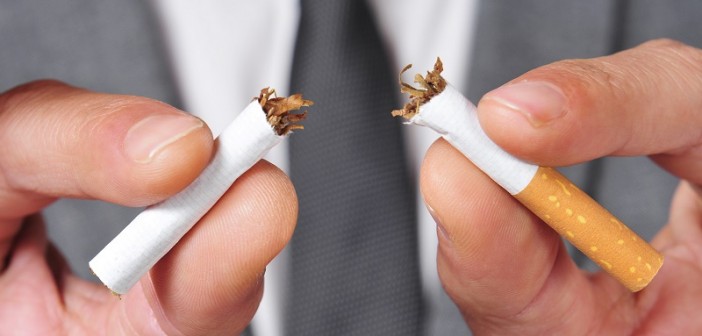You’ve heard about the harmful influence that smoking has on your overall health, but did you know it is especially harmful to your mouth? Sure, it stains your teeth and gives you terrible breath yet that is only the beginning. If you needed another reason to quit, take note of the following.
Oral Cancer
Smoking is associated to cancer, but maybe you never knew of the types of cancer you can develop from smoking or chewing tobacco. Such habits contribute to cancer of the mouth, tongue, lips, gums, and throat. A Canadian study estimates that there will be 3,400 new cases of oral cancer each year. Unfortunately, unlike other types, oral cancer is not discovered until its late stages, which makes it more deadly.
Gum Disease
As mentioned, you could develop cancer of the gums by smoking, but you also could contract gum disease. Smoking attracts more bacteria and plaque, so gums stay under steady attack. Also, smokers have lower levels of oxygen in the blood, which facilitates slower healing. When gums get infected, the body is not able to defend itself. Gum disease worsens at an alarmingly quick rate in smokers as compared to those who do not smoke.
Multiple Cavities
Smoking attracts more bacteria and plaque, and plaque causes cavities. Those who smoke have a higher risk of tooth decay. Actually, regular smokers have three times more cavities as compared to those who do not smoke. If rotting teeth is not enough of a problem, consider the amount attached to your dental bills. Go to Guardian Life Dental Insurance to read about getting an affordable plan.
Bad Breath
Do you want to be labeled as a person with awful breath? Smokers don’t have the kind of bad breath they can get rid of by popping a mint. Did you know that more than 4,000 chemicals pass through your mouth when you smoke, which collects on your tongue and the sides and top of your mouth? Eww! Moreover, smoking dries your mouth ,which can inspire gum infection, irritate sinuses, and induce post-nasal drip.
Stained Teeth
Aside from bad breath, smokers have yellow, stained teeth, which is also not very attractive. It’s because cigarettes contain tar and nicotine that is left on the surface of tooth enamel. After years of smoking, the yellowish tint becomes permanent. That means there is little a cosmetic dentist or whitening strips can do at that point.
Shoddy Sense of Taste and Smell
Are you one who loves food or the smell of fresh flowers? Regular smokers damage their sense of smell and taste. That means food is much less enjoyable, but worse, you may overcompensate by adding more salt or sugar to foods and drinks. One in five smokers suffer from a damaged sense of taste or smell. However, the condition is reversible – as long as you plan on quitting.
Lost Teeth
It’s acceptable for your teeth to fall out when you’re six years old, but do you want to lose teeth as an adult? Male smokers are 3.6 times more likely to lose teeth as compared to non-smokers, and female smokers are 2.5 times more likely to lose teeth. The stats come from the Journal of Dental Research.
Leukoplakia
Smokers are at a higher risk of getting leukoplakia, which contributes to forms of cancer. The salivary glands get inflamed and contributes to the deterioration of the bone structure in the mouth. Moreover, those with the condition have a harder time recovering from dental procedures.
Dry Sockets
As mentioned, smokers are prone to losing teeth and cavities. In worse cases, rather than a filling, a dentist may decide to extract a tooth. Smokers may develop dry sockets after extraction procedures, which is associated to severe pain since nerve endings are exposed.
Smoker Hygiene Tips
Of course, the best course of action is to quit smoking. However, it’s understood that some cannot quit ‘cold turkey,’ but need more time. Therefore, present smokers should take note of several hygiene tips. To start, make sure that you make it to the dentist every six months.
Secondly, since smoking stains the teeth, smokers should avoid foods and drinks that also stain teeth, such as coffee and soda. Also, avoid foods that are highly acidic in composition; such foods contribute to the eating away of tooth enamel.
Lastly, do self checks and be on the lookout for recurrent bleeding in the mouth and lesions, swelling, and lumps. If you have recurring pains or spot something out of the ordinary, don’t hesitate to head to the dentist office.
Rachel Bailey encounters plenty of people with oral health issues in her public health work. She is keen to share her insights on matters like how smoking can affect your health with an online audience and writes for a number of websites regularly.




